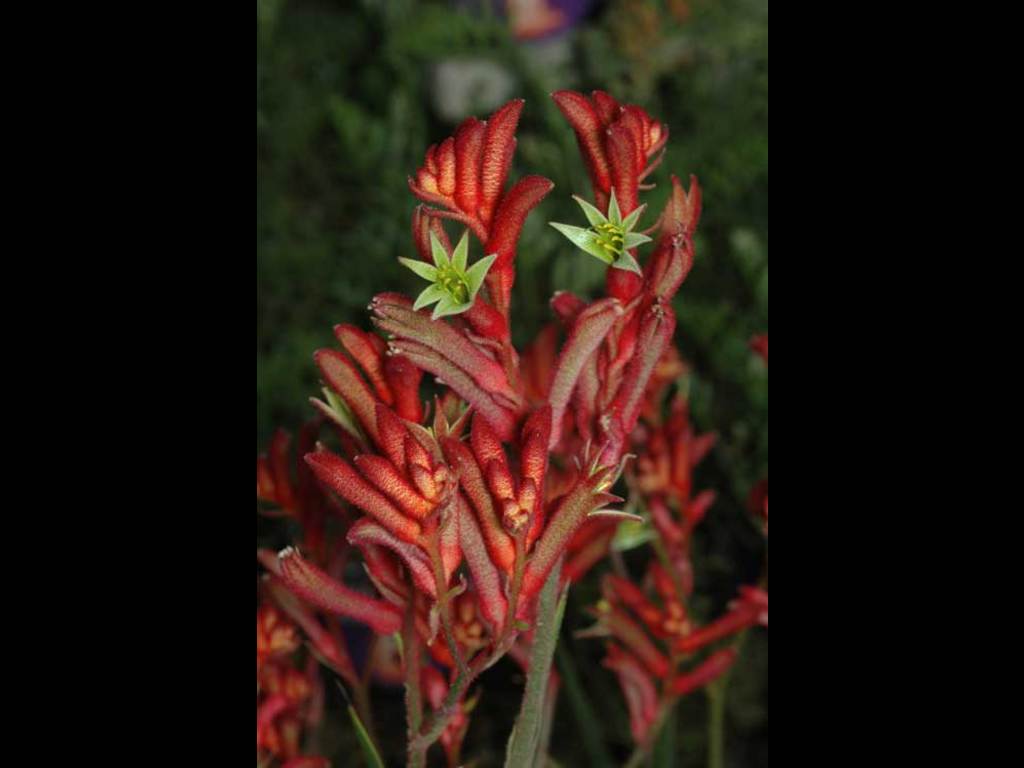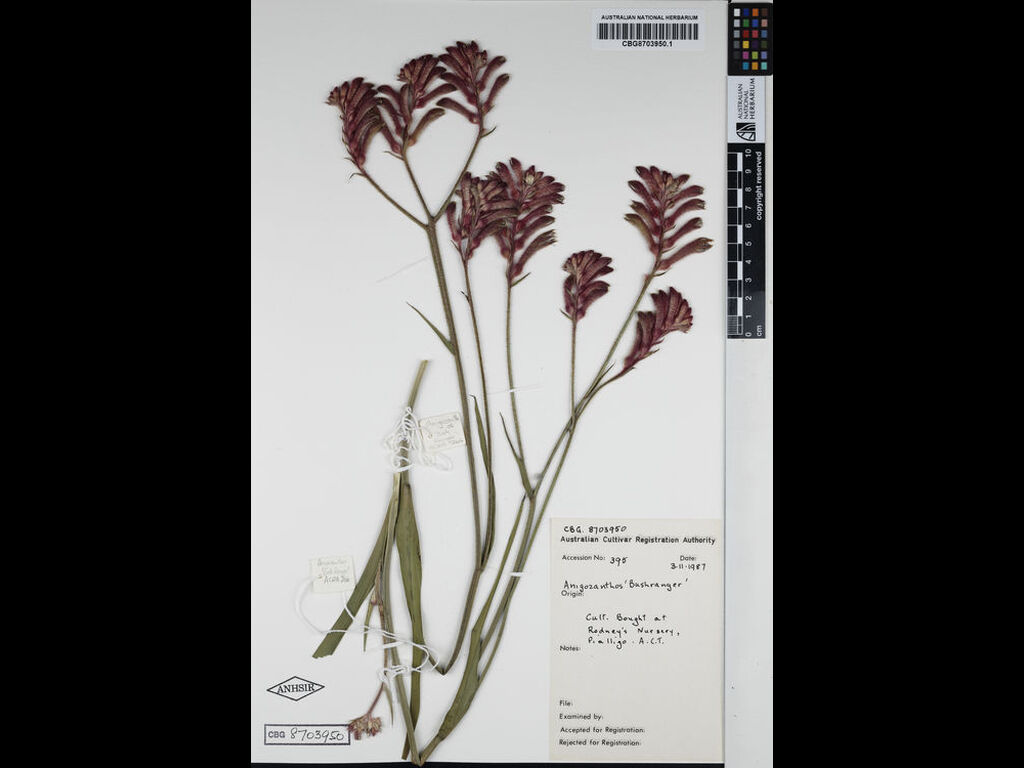Anigozanthos 'Bush Ranger'
- File Number
- 395
- ACRA Field Book Number
- 205
- Registration Date
- 19/10/1989
- Application Received
- 01/03/1987
- Family
- Haemodoraceae
- Cultivar Name
- Anigozanthos 'Bush Ranger'
- Origin
- Anigozanthos 'Bush Ranger' is the result of a cross between A. humilis and A. flavidus The cross was done by the late M. Turner of Monbulk, Victoria. The cultivar was first received by the Authority in March 1987. Registration applied for by Biotech Plants Pty Ltd of Somersby, NSW.
- Characteristics
- This cultivar grows to 55cm tall by 25cm wide. The leaves are a bright green and up to 20cm long. They tend towards being sickle shaped and the leaf margins have scattered hairs. The flowers, as with many Anigozanthos, appear to be multicoloured and the colours change as the flowers age. The younger flowers are a green-yellow, but the perianth is covered in plumose-red and occasional green-black hairs which make it appear orange. The older flowers are a dull red, some with a purplish tinge. The perianth is tubular and up to 4cm long. The flowers are in simple terminal racemes, and the flowering stems are occasionally branched. The flowering season is during the spring and summer months. There are numerous ovules per locule. Diagnosis: Anigozanthos humilis: 10-50cm tall x 10cm wide, leaves 15-20cm long x 1cm wide, leaf margins hairy, leaves hairy to glabrous. Flower stem up to 50cm tall and covered in woolly hairs, unbranched to occasionally forked. Flowers tubular to 5cm long and covered in short hairs. The perianth lobes are slightly curved back and the flower colour can be from cream/yellow/orange/pink/red. Anigozanthos 'Bush Ranger': 45-55cm tall x 20cm wide, leaves less than 20cm long, margins with scattered hairs, glabrous. Flower stems up to 55cm, coated in light hairs which become denser towards the top, occasionally branched. Flowers are tubular and up to 4cm long, covered with dense hairs. The perianth lobes are not turned back and the flower colour can be from orange-red to purple on older flowers. Anigozanthos flavidus: from 50-200+cm tall x 100cm wide. Leaves to 100cm long x 2-4cm wide, glabrous. Flower stem to 200+cm tall, glabrous to where branching starts. Flowers tubular, 3-4cm long and covered in dense hairs, lobes not turned back. Flower colour can be from red/orange/pink/yellow/ and green.
- Cultivation
- This cultivar was first introduced in 1986. Initial trials showed a superior resistance to fungal leaf spot when compared to both the parents. It has showed good vigour in both growth and flowering capacity. It is drought hardy and shows moderate frost resistance. The cultivar must be grown by vegetative means to preserve the cultivar form. It is a very useful container plant and has bird attracting qualities.
- Publication
- Australian Cultivar Registration Authority (1988), Garden Varieties of Australian Plants 1: 28
- Colour Coding
- RHS Colour Chart 1966 Flowers: inside of perianth: close to Greyed-Green Group 194A; perianth surface: Green-Yellow Group 1D; perianth hairs: Red-Purple Group 59A;
- Propagation
- Division or tissue culture
- Applicant Name
- Biotech Plants Pty Ltd
- Uses
- As part of a mass planting or mixed in a shrubbery, or as a spectacular feature plant. Attracts nectar feeding birds.
- Availability
- Specialist native plant nurseries, Kuranga Nursery
- ANBG Accession Numbers
- ACC395; ACRA266/452/205/318; CBG8703950/8910944.
- NSL ID
- -

